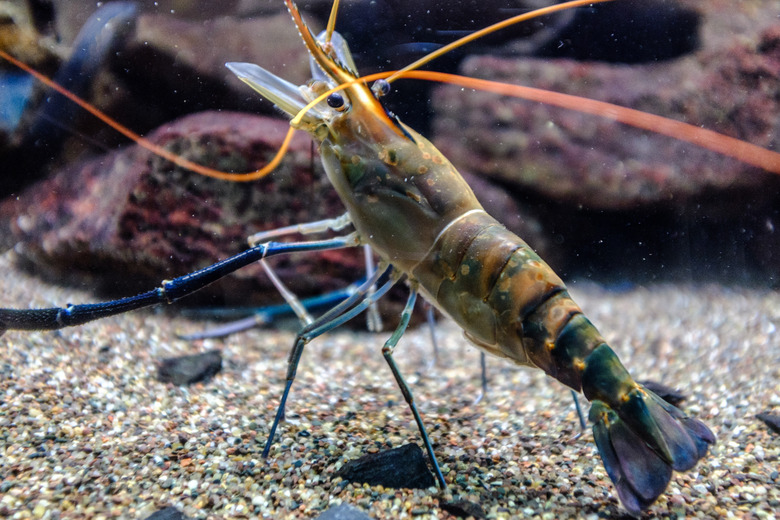What Kind Of Water Does Shrimp Live In?
Many people are more accustomed to seeing shrimp on a platter at a dinner party than in the bodies of water near their homes. However, these aquatic creatures are very diverse and capable of surviving in a wide variety of marine and freshwater environments. Many species of shrimp have adapted to constantly changing and often harsh conditions.
Warm Saltwater Shrimp
Warm Saltwater Shrimp
Most species of shrimp live in saltwater, and many of those saltwater shrimp live in warm saltwater. These bodies of warm water include areas, such as the Gulf of Mexico and the South Atlantic Ocean. Warm saltwater shrimp species, like most shrimp species, are benthic animals, meaning they live on the bottom of the sea floor. Warm saltwater shrimp are also a large portion of the catch in the shrimping industry.
Cold Saltwater Shrimp
Cold Saltwater Shrimp
Cold saltwater shrimp live in deeper (therefore) colder waters than warm saltwater species. Some species, such as Galatheacaris abyssalis, are capable of surviving in waters as deep as 16,000 feet. Cold saltwater shrimp are, on average, larger than warmer saltwater. Also, cold saltwater shrimp are fished extensively in the coastal areas of Central and Southeast Asia. Species such as the tiger shrimp (which is actually a prawn, an animal related to, but not actually the same as, shrimp) and the whiteleg shrimp are highly sought-after by commercial shrimping outfits.
Freshwater Shrimp
Freshwater Shrimp
Freshwater shrimp tend to be larger than saltwater species. These species are also not fished as heavily as saltwater species because many freshwater shrimp are not edible. Additionally, freshwater species live most in landlocked bodies of water that are more shallow than deep seas. Freshwater shrimp can even live in water than is somewhat polluted because they have a high tolerance for toxins and pollutants. Lastly, freshwater shrimp (such as the bamboo shrimp and Japanese marsh shrimp) are popular aquarium species sought after because of their colorful, ornamental and exotic features.
Estuarial, Farm-Raised and Brine Shrimp
Estuarial, Farm-Raised and Brine Shrimp
Some species of shrimp can live in estuaries, where saltwater and freshwater mix. These shrimp, however, usually live in the areas of the estuary that have the highest saltwater content. Shrimp are also farmed commercially. In shrimp farms, the water conditions, whether saltwater or freshwater, are strictly controlled in terms of nutrient concentrations and temperature. Brine shrimp, the tiny species that is also called "sea monkey," require very salty water, saltier than sea water. Brine shrimp only live in enclosed bodies of warm, extremely salty water.
Cite This Article
MLA
Cato, Jeremy. "What Kind Of Water Does Shrimp Live In?" sciencing.com, https://www.sciencing.com/kind-water-shrimp-live-8419305/. 22 November 2019.
APA
Cato, Jeremy. (2019, November 22). What Kind Of Water Does Shrimp Live In?. sciencing.com. Retrieved from https://www.sciencing.com/kind-water-shrimp-live-8419305/
Chicago
Cato, Jeremy. What Kind Of Water Does Shrimp Live In? last modified August 30, 2022. https://www.sciencing.com/kind-water-shrimp-live-8419305/
